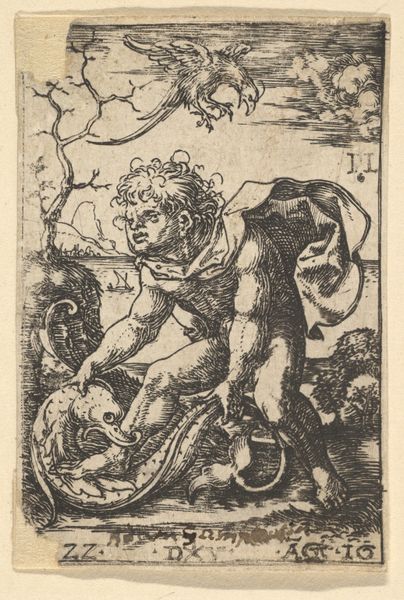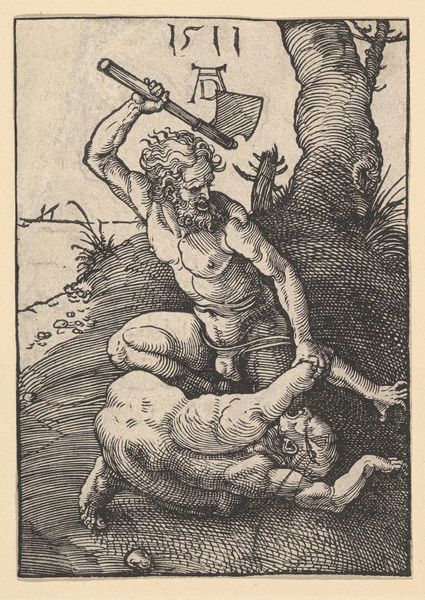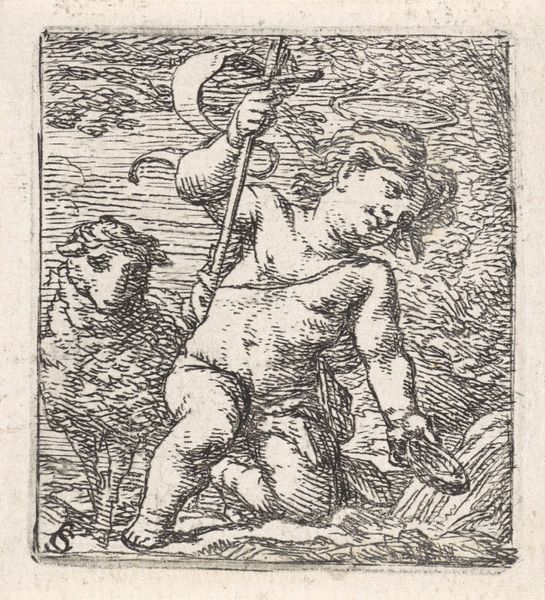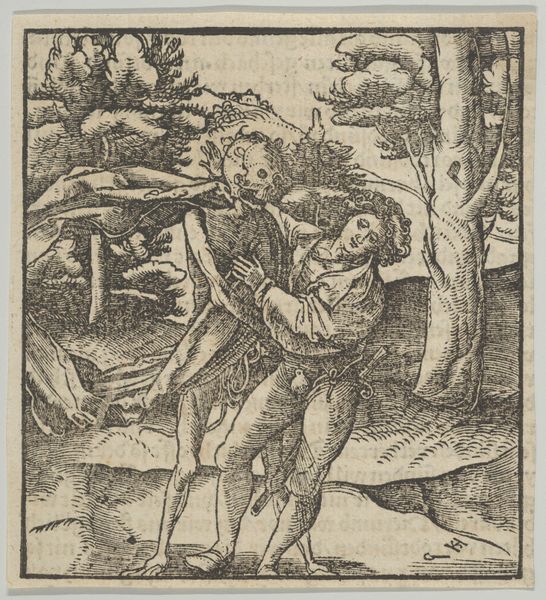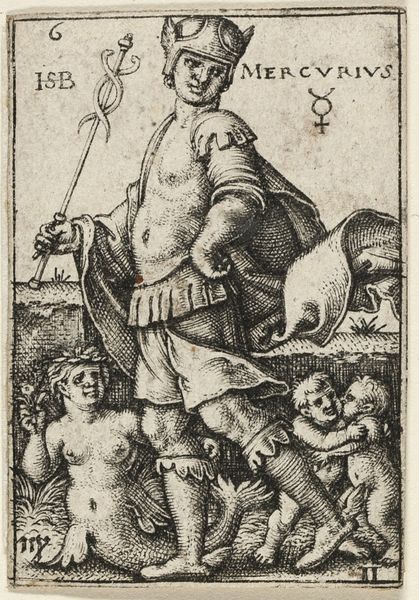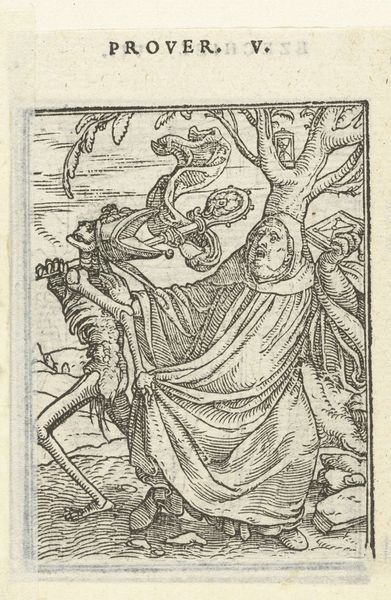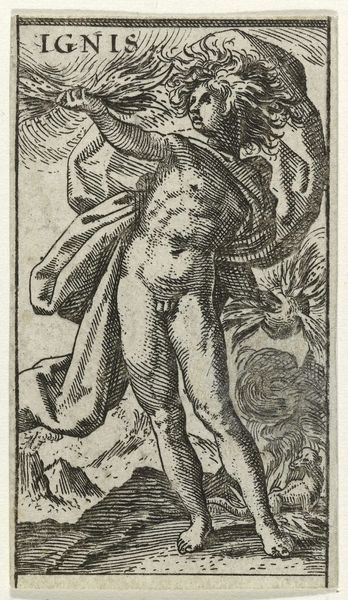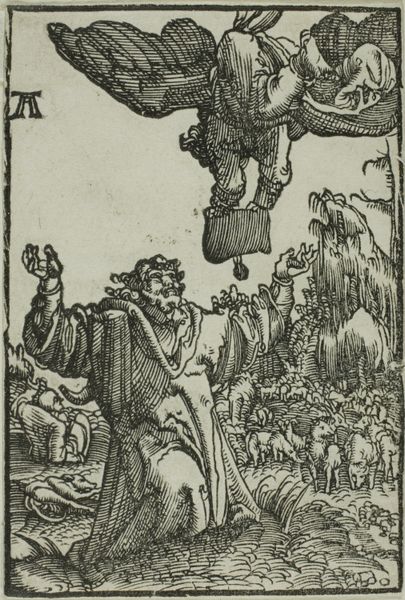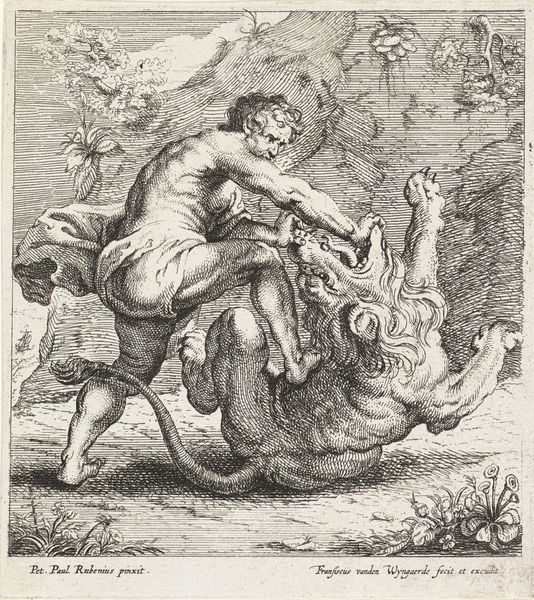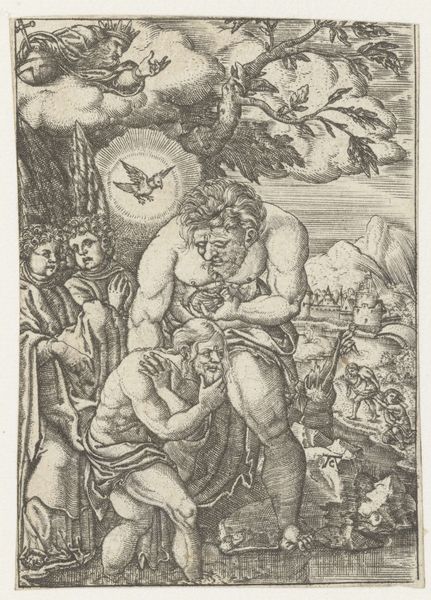
drawing, ink, engraving
#
drawing
#
ink drawing
#
narrative-art
#
pen drawing
#
figuration
#
ink
#
northern-renaissance
#
engraving
Dimensions: height 65 mm, width 44 mm
Copyright: Rijks Museum: Open Domain
Curator: Let's consider Dirck Vellert's engraving, "Man met een vis," possibly dating from the years 1522 to 1528. An intriguing work in ink, isn’t it? Editor: Immediately, the somewhat awkward, angular figure strikes me. There’s a tension, a sort of unsettled quality, despite the classical subject matter implied by the putto-like figure. Curator: Yes, there is a captivating ambivalence to it. Consider the lines – their meticulousness, their very precise weight that delineates the planes of the figure. Notice how Vellert employs hatching and cross-hatching to create a sense of volume, focusing especially on the musculature. It's about achieving visual impact through structure. Editor: But how do we interpret this tension? Perhaps through the lens of Northern Renaissance anxieties concerning shifting power structures – religious and secular? The youthful male, precariously balanced atop a fantastical creature, doesn’t quite command it, nor does he seem entirely at ease. Is it mastery or mere performance? And consider the phallic imagery throughout: The dolphin's snout, the talons of the bird above... It feels decidedly masculine and charged with latent power, but unfulfilled, perhaps. Curator: Indeed. The fish motif in Renaissance art often alluded to religious symbolism, the soul guided towards salvation. Note that, compositional elements converge, almost colliding – bird above and putto, fish below: A dialectic within which the figure is itself negotiated. We observe here an art predicated on established iconography but also daringly disrupted through formal treatment. Editor: And consider its potential relevance to contemporary discourses around identity and agency. Is it not fitting, perhaps, to question who that assumed masculine power benefits, even mocks? That is how such imageries reflect anxieties still felt and processed through the art. Curator: A rewarding point indeed. I see the composition primarily as a virtuoso demonstration of linear design and perspective. Editor: While I find that formal analysis is still pertinent in understanding it today; viewing this etching through socio-historical lenses and its inherent contradictions gives another valuable way to interpret its timelessness. Curator: Perhaps that is, precisely, the merit of art: The intersection where many interpretations might coincide. Editor: I think that our exchange confirms the vitality in constantly reassessing and questioning artwork as we come to engage.
Comments
No comments
Be the first to comment and join the conversation on the ultimate creative platform.
